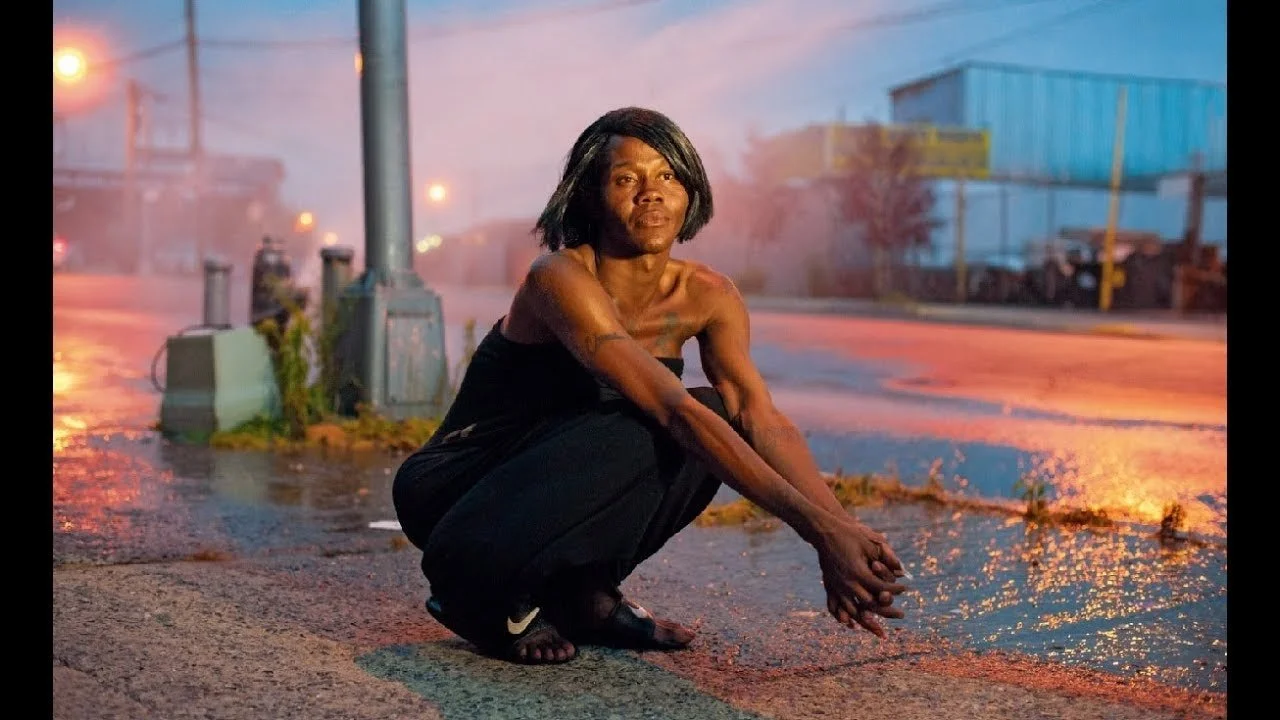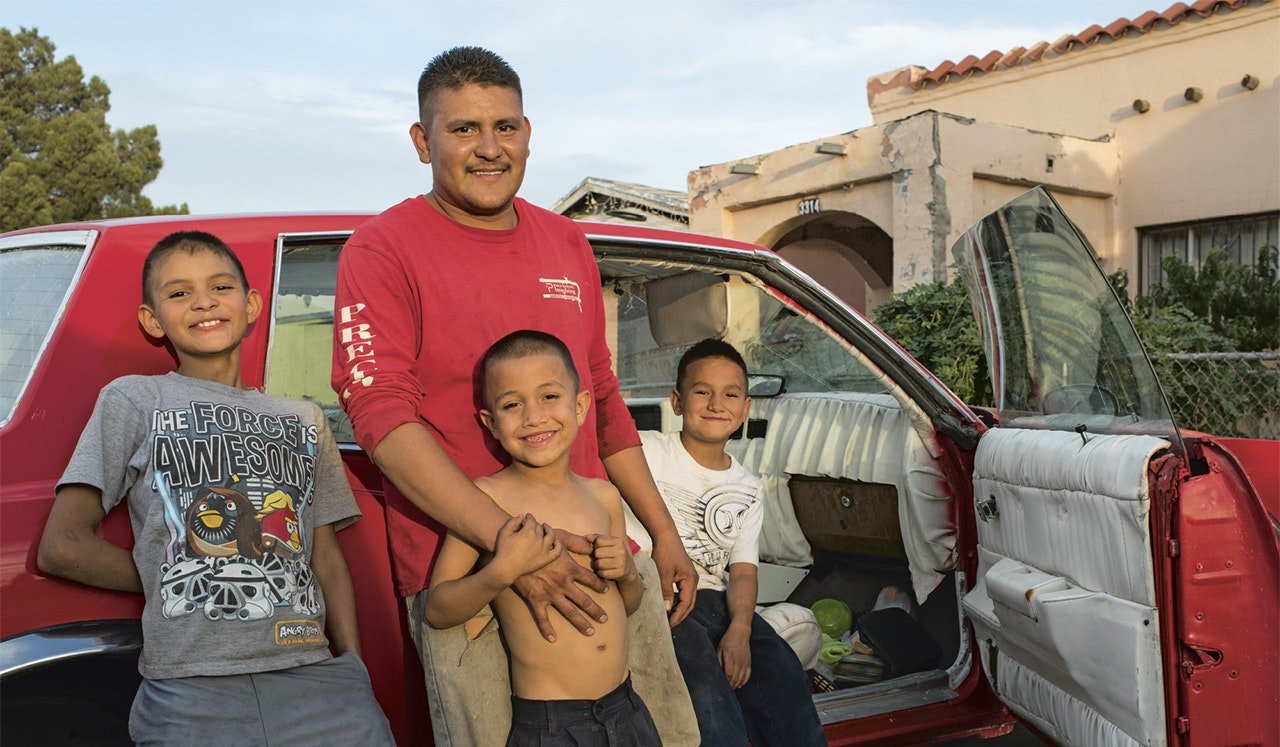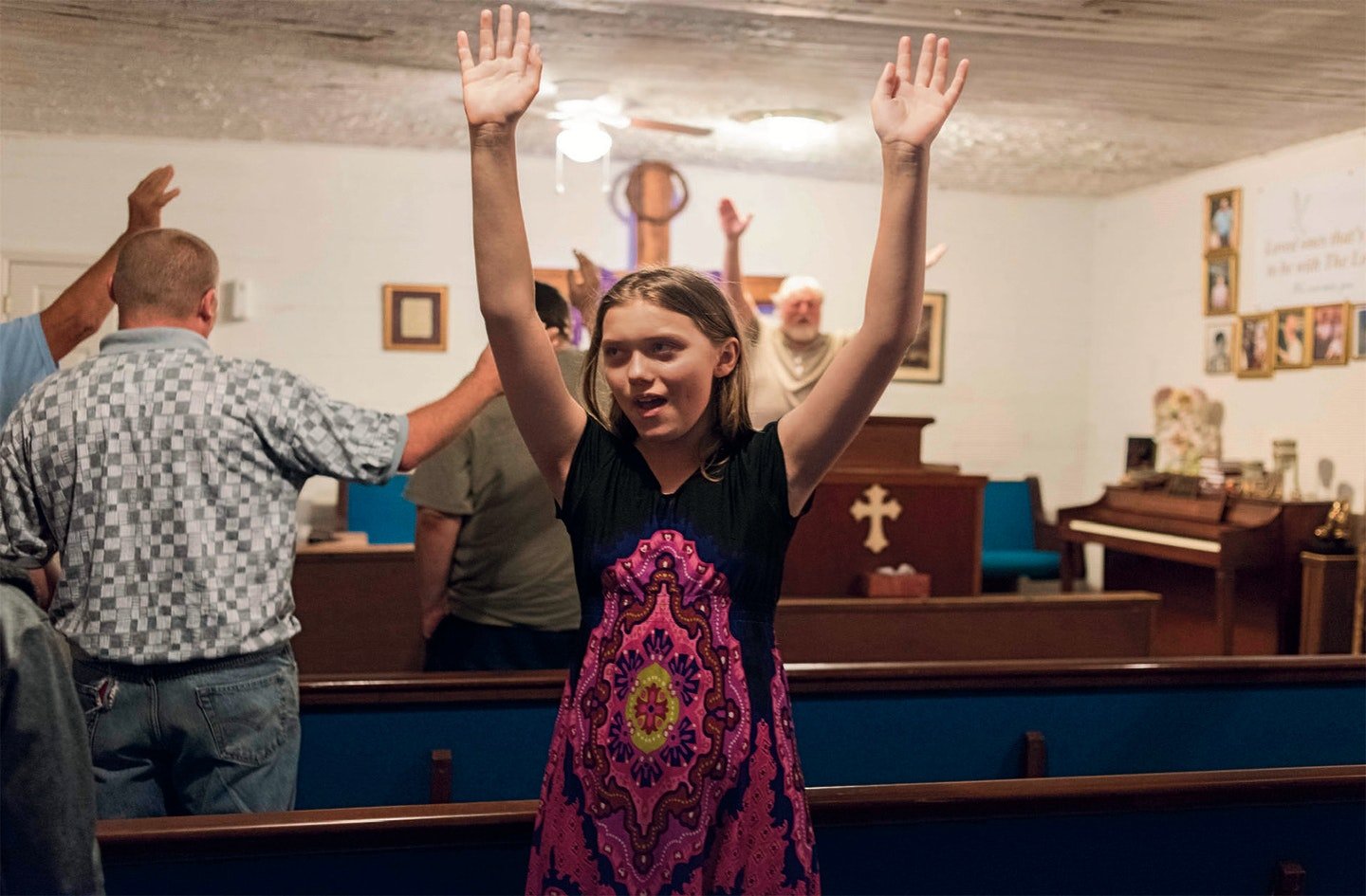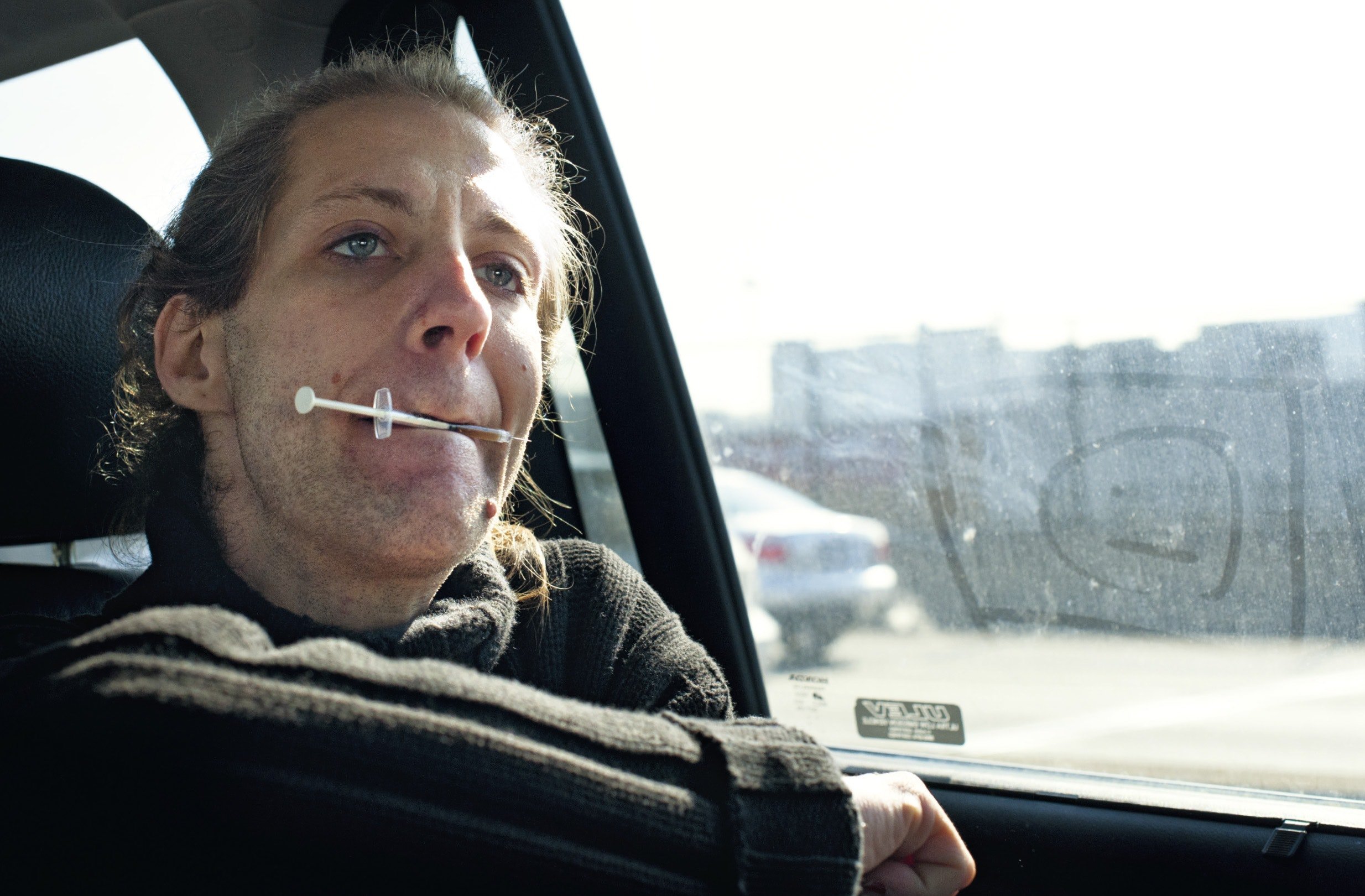Tattoo!
Illustration by Gabriel Moreno
The official definition of “tattoo” according to Webster is:
1: a mark, figure, design, or word intentionally fixed or placed on the skin:
a) one that is indelible and created by insertion of pigment under the skin
b) one that is temporarily applied to the skin, resembles a permanent tattoo, and usually lasts for a few days to several weeks
c) one that is composed of scar tissue intentionally created by cutting, abrading, or burning the skin
2: the act of tattooing : the fact of being tattooed
But what if the real tattoos are internal and not visible for all to see?
The moments, experiences and events that mark a person’s life but leave no external sign.
The transformative moments that impact what we feel, think, and believe.
Moments that resonate for a while or forever.
These are tattoo moments.
Illustration by Gabriel Moreno
Tattoo moments and identity.
We are what we are because of what we were, where we have been and whom we have intersected with.
We are in large part what we remember.
Often, we try to define a person by demographic or behavioral criteria.
We segment by media exposure, search history, geographic location, political affiliation, product ownership and leisure activities.
The fumes of people’s digital usage and external badging are read like entrails to understand and reveal motivations.
But do they truly paint a picture of who a person is, what they care about or what makes them tick?
Data, data everywhere.
So much data under which we sink
Data, data everywhere.
Does it paint a picture or help us think?
Imagine getting all the data you could collect about a person to paint a profile.
The reality is any individual is many different people depending on the specific mood and situation and in many ways may not be knowable.
So, we will parse the data depending on what we are looking for.
As has been written “we see as we are.”
Imagine if instead you could have a conversation with that person and ask questions like these:
a) What events and or people in your past have made you who you are today? Why?
b) What beliefs have you given up on and/or what beliefs have you aligned with more strongly? Why?
c) What makes you most happy and most fearful?
We might understand someone as a person and a human versus a consumer, user, or target.
We are not a compilation of our purchases, downloads, page views or other numerical juxtapositions.
The meaning is not often in the math.
Illustration by Gabriel Moreno
Tattoo moments and marketing.
For decades marketers have found certain stages in a person’s life where they are more susceptible to messaging and marketing.
Whether it is the impending birth of a child to a physical re-location there are times where people are more open to change or to paying attention.
Marketers also recognize that there are moments of interaction where up-selling or cross-selling is likely to be more successful, such as when someone is opening an account or when one is about to pay for items in one’s real or digital shopping cart.
Basically, marketers look for moments of greatest attention and interest.
The challenge is that everybody knows these rituals and some combination of high costs and fees to show up at these moments or a certain weariness and understanding by people of what is happening, makes these less differentiable.
If instead of thinking only about where someone is on a customer/purchase journey we think about where we can surprise them positively the most, or turn a negative to a positive, we find compelling tattoo moments.
For instance, if we want to get people to speak well about our product or service instead of advertising to them or desperately try to get likes or influencer mentions, why not give them a sample of the product for free? Why not re-allocate a portion of the communication budget to enhance the quality of the product or service which will then speak for itself and get its satisfied users to speak about it. In today’s world brands are more likely to scale through people if they have a superior product or service rather than just telling people they have a superior product or service.
Imagine if you were a cable company or publisher and re-allocate the “stop them from unsubscribing” budget where you slash prices, increase channels in a bundle or enhance broadband speeds to people who are quitting, to instead reward the most loyal customers by going to them and cutting their fees and/or upgrading their services to simply say thank you.
When someone least expects an act of generosity it has a tattoo like impact.
It means they are special, and they are not being taken for granted.
So many marketers promise to “surprise and delight” customers but do we really?
Instead of a yearlong spray of pellets that have little impact why not focus spending by delivering a couple of cannon balls of high impact interactions, gifts, or surprises?
One or two “surprise and delights” might be worth a year of messaging
Less is more. The rare is meaningful. The special resonates.
Traffic in scarcity to stand out in a world of abundance, sameness, and noise.
Find and fund the tattoo moments by asking “what can we do and where can we do something that will make someone come away different”?
Illustration by Gabriel Moreno
Tattoo Moments and Talent.
A combination of new technologies and the challenges of Covid-19 have forever changed the future of work and how talent views things.
A colleague of mine recently noted that most work could be segmented as “heads down”, “heads up” or “heads together”. “Heads down” would be tasks like reading documents, working on developing content and other primarily solo work. “Heads Up” is where we attend presentations and meetings primarily to share and gain information. “Heads together” is when we need to work together to collaborate, brainstorm, and network.
Cultures are important to companies. Connections with other people in the analog world can be important for people particularly early in the career to learn and build relationships. While much of the “heads down” and a majority of the “heads up” work can be done in a distributed and unbundled fashion, a large part of the “heads together” work can gain from in-person connections particularly early in a project or when teams are first getting together.
But the reality is that for most people the five day or even the three day a week model may be replaced by a few team interactions a quarter and many of these may happen outside the office at an off-site event, a restaurant, or a conference.
Companies are going to have far fewer opportunities to build the fabric of their cultures and managers are going to have far fewer in person opportunities to interact with their teams.
Therefore, every company must re-think how to manage the growth and development of their talent, the fabric of their culture and the strength of human connection when there will be just a few occasions a year.
How does make these interactions count and meaningful?
A significant investment in great training to help people grow themselves is a way companies will create tattoo moments that matter.
Ensuring that managers are trained to make the most of in-person interaction and to learn to empathize with the situation of their teams (family or other pressures, need for flexibility) or enable acts of generosity and kindness that will forge emotional links between people is another area that companies should focus on.
Increasingly companies will recognize that attracting and retaining talent means sculpting moments that matter. Powerful experiences, employee joy and a diverse fear free culture can be built around a few tattoo moments.
Regardless, we can all make our mark on each day by living it italicized, bold and with an exclamation mark!
Every day we should ask what made it memorable and special and how we tried with each interaction to help someone come away different and better.
Tattoo!
Learning to Learn
Photography by Xuan-Hi Ng
Earlier this week, I was invited to speak about the Future of the Internet to nearly 800 individuals.
This included topics like Web 3.0, Metaverses, Crypto, NFT, Wallets and more.
After the presentation, I heard from quite a few attendees who in addition to finding the hour enlightening and educational queried me on how I had "figured out" and “made clear and enabling” versus “confusing and intimidating” a complex topic.
They were asking how one learns to learn.
Photography by Xuan-Hi Ng
Upgrading Our Mental Operating Systems.
My book "Restoring the Soul of Business: Staying Human in the Age of Data" includes a chapter called 'Upgrade Your Mental Operating System" which ends with these key takeaways:
1. Regardless of how senior or established employees are, they all possess the capacity for growth and relevancy in changing times.
2. Organizations need to set aside time for people's mental self-improvement. They can encourage employees to escape digital routines and engage in tasks and conversations that stretch their minds.
3. Today there are many amazing new ways of self-learning and improving of which every person can take advantage of.
The book was written before the tragedy and challenges of Covid-19 which we are still grappling with two years later. Today, in a world of unbundled and distributed work, the great resignation, the need for meaning, and a hunger for skill and personal growth to remain relevant in transforming times, these key takeaways are even more resonant.
Photography by Xuan-Hi Ng
Three things all of us can do to learn.
1.To learn we must be committed to learning and set aside time for it.
All of us should set aside an hour a day (or seven hours a week) to learn.
Understandably, when so many of us are stretched with responsibilities and job pressures and family challenges it may sound unrealistic to set aside an hour to learn.
The reality is that we do not have a choice since the world is changing so fast that a failure to upgrade our mental operating systems will sooner or later result in failure and setbacks that will cost us years because we did not find an hour a day! (Chill an hour less with Netflix, scroll a little less on the socials, watch summaries of sports games on YouTube versus watching the entire game).
We cannot outsource learning (yes people can help guide us), but we must exercise our own minds just as we cannot outsource physical exercise to someone else to keep our body healthy.
2. Build a case for the opposite of what you believe is true.
Nothing makes you think differently and truly see from a different perspective as building a case for the opposite of what you think or believe is true.
At minimum it helps you make your case better by seeing the opposite side and fixing the weak spots in your argument and sometimes you may see things differently and change your mind.
Today we really need to do this since a combination of who we spend time with, media we choose, and algorithm driven feeds that are optimized to re-enforce our convictions can lead us to lose grip with reality.
This is true for all of us but particularly for senior and powerful people who may be surrounded by sycophants or people worried about saying things that will displease the “boss”.
Sooner or later because of these filter bubbles, self-re-enforcing loops or carefully massaged and edited communications we make the mistake of believing that our flatulence smells like Chanel 5!
3.Do!
If you want to learn how to be a good writer, you cannot stop at reading great writers and books on writing. You must write and get feedback and then write again.
If you want to learn Web 3.0 reading Scott Galloway, A16Z or others are interesting and important but sooner or later you must plunge into Discord and Twitter communities, get a wallet, mint an NFT, put on an Oculus 2 or a HoloLens (if you can access one) and much more.
Only then will we realize so much of what people are promoting, boasting, fear mongering, moaning, or screaming about is utter BS and why Web 3.0 and Metaverse are not the same and one can do very well without the other! And the real sleeper here is how the wallet could change everything about identity, privacy and data ownership!
Only by doing can we learn enough to understand and lead.
Photography by Xuan-Hi Ng
Fresh perspectives. Fierce provocations. Feedback.
To ensure learning it is imperative that one have a diversity of not just faces but voices. By looking at things from different perspectives and from perspectives of different people we grow.
In addition, one needs to think provocatively and question all in going assumptions and first principles. Too many of us believe we are more limited and have less agency than we do. One does not know where the line is until one crosses it.
Finally continuous or regular feedback helps us learn. Here are some best practices on receiving and giving feedback. https://rishad.substack.com/p/on-feedback
Photography by Xuan-Hi Ng
The Journey Ahead.
The future is important because we are going to spend the rest of our lives there.
Regardless of what your news channel and your digital stream may indicate we are not all doomed, things are not all dark and the days of the past were not the halcyon days they are made out to be.
Rather, we are at the cusp of the most amazing time for humanity where a combination of all of our learning to date, breakthroughs and inter connections between technologies such as AI, Biotech, Blockchain, 5G, Robotics and a total re-think of education, finance, mobility and health care in a global world where billions of people have access to technology with “God-Like” power is going to unleash a bright future.
We can be better, and we can do better.
Even if it is just us as one single individual.
Because after all a society and a company is nothing but a collection of individuals.
Arthur Clarke the writer of 2001 a Space Odyssey is buried in Sri Lanka.
His tombstone can serve as an inspiration to us all to keep learning and growing:
“He never grew up, but never stopped growing.”
The Fractionalized Employee
Arizona Canyon photography by Ed Cooley.
Most of us need to work and it is central to our identity.
Yet, even though work is important most of us do not define ourselves solely by work. We have many other identities and responsibilities (parent, caregiver, sailor, artist…) that make us who we are or passions we wish to pursue.
To integrate and deal with the spectrum of what life brings we could work at a job with all its benefits but also constraints or be a free-lancer/independent worker with all its freedoms but uncertainties.
Today due to several forces there is the possibility of another way as we architect the future of work.
A way that benefits both the individual employee and the firm.
Arizona Canyon photography by Ed Cooley.
Three Forces
Three con-current forces are re-sculpting the nature of work and what constitutes a company in the most dramatic ways in over a century.
Technology: Over the past four decades one wave of technology after another has changed the nature of work, where it is done and when it is done.
This began with the expanded use of the personal computer in the 1980’s, the birth of the First Connected Age with the World Wide Web in 1993, cloud and mobile computing of the Second Connected Age of the 2000’s and now the coming tsunami of Web 3.0 +5G+AI and more of the Third Connected Age.
Demographics: Except for the continent of Africa most countries particularly Europe, the US, China, and Japan which account for most of the global GDP are seeing shrinking and aging populations on one hand and a new generation of talent which questions the way companies are organized and run.
Covid-19: The past two years of unbundled and distributed work has changed people’s mindsets. They are like champagne corks that once opened swell and do not fit back in the bottle. Everything is being questioned from the nature of work to the role of management.
These three forces of accelerating and enabling technology, declining work forces and new mindsets have significantly shifted the balance of power to talent versus the firm in most white-collar knowledge-based industries.
Arizona Canyon photography by Ed Cooley.
The firm is likely to endure.
Companies of various sizes will continue to exist both as key drivers of economic growth and the creators of jobs. The late Ronald Coase of the University of Chicago wrote the firm exists because external friction is greater than internal friction which means whether it is from standing behind a Brand promise, to building and bundling expertise to re-allocating capital it is easier to do it as a firm versus a swarm of individuals. As we move into the Web 3.0 world of DAO’s (Decentralized Autonomous Organizations) the nature of governance may change but some sort of firm will likely endure.
But their architecture and how they attract, retain and leverage talent will continue to morph dramatically in the next few years as both capital and labor, management and worker, and employer and talent work to find a mutually profitable win-win scenario.
Work will matter.
Despite the anti-work screeds of Reddit (which itself has imploded in a civil war of schism and re-crimination) people will need to work for a variety of reasons including income but also for identity, community and meaning.
The big shift is not going to be about working or not working but how the work is done at a particular time in an individual’s career. There will be more flexibility in how talent will work but also more flexibility in how companies can interact with the talent.
Today most companies combine three types of work forces.
A full-time employee,
A full time or part time contracted employee from another firm (e.g., Wipro or Cap Gemini)
Free-lancers (directly or via an intermediate firm)
Full-time employees are usually the backbone of any company and its culture with contracted and free-lancers being mixed in to expand expertise and manage oscillating workloads in a cost-effective manner.
We may now want to think of a fourth type of worker to reflect the forces of technology, shifting demographics and new mindsets: The Fractionalized Employee.
Arizona Canyon photography by Ed Cooley.
The Fractionalized Employee.
Imagine if one could get both the continuity and loyalty of a long-term employee with the flexibility of cost management of a part time employee and the expertise of a free-lancer and do so in a way that both grows employees and retains them in the long run.
This is the Fractionalized Employee.
Every employee in the company is given a choice to work 100%, 75% or 50% of their time. (In the US one needs to be working 50% to be eligible for health and other benefits).
They get to select this at the beginning of every year or can adjust to a different level when a life event occurs (health, birth of a child, need to take care of a parent, a passion that needs to be attended to or other life issues).
No longer does an employee have to choose between staying or going or being torn trying to do two things at one time. If they wish to try out a different type of non-competitive job (starting a gaming company –assuming they are not working at a gaming company--or being an artist or writing a book) it behooves their employer from letting them do so because retaining half or three quarters of a talented person is better than zero. As importantly these external skills or vocations will make the employee better rounded and probably more productive. And there will be cost savings from both reduced compensation but also eliminating the friction and cost of severance, re-hiring, and training.
And it will probably attract a lot of talent who may want to work 50 to 75 percent of their time.
Including the more seasoned who might only want to work half their time. As countries grapple with aging and declining populations this is one way to address this issue.
For the employee they do not have to give up an income stream, health benefits or a part of their identity to build new skills, pursue new horizons or take care of life’s events. Over the course of a career, they can dial up and down the percentage they work.
As importantly with a base revenue stream and health care they can decide how to use the percent of time they have bought back or own including building new skills or working as a free-lancer or expert with many new communities of talent. For many people free-lance work alone does not work either because of lack of health care, unstable income, or lack of connection to a community (though there are many new models of communities working to offset these issues).
The Fractionalized Employee model will allow companies to retain talent, grow talent, mix, and match talent in ways that are truly win-win.
The company gets access to cost effective talent and a program to differentiate and attract talent. It has a stronger culture than one with lots of people who do not leave or lots of continuous dependence on free-lancers.
Talent gets to retain income streams and benefits and continuity and community or work while balancing life challenges or other passions and interests.
Arizona Canyon photography by Ed Cooley.
Why the Fractionalized Employee makes sense today?
The Great Attraction listed the nine factors that make people join, stay, and thrive at a firm. They join for money, fame(recognition) and power(autonomy). They stay for values, purpose, and connections (with clients, bosses, and their colleagues). They thrive when the have freedom (flexibility), story (how the company fits into their lives versus they are fitting into the company’s life) and growth (growing themselves as people as well as skills).
Being offered the ability to work 50, 75 or 100 percent of their time enables all of these but particularly the latter three of freedom, story and growth that allows them to thrive.
And if a company is to thrive it can only do so if its employees do.
Modern technology, new mind shifts and changing demographics call for a new way that allows firms to thrive and people to grow. Smart companies, leaders and talent/HR teams should adapt their rules, structures, and ways of operating to enable the fractionalized employee.
Wisdom.
A week ago, I was one of a dozen speakers at a “Celebration of Life” event to mark the passing of a renowned and highly respected leader in the marketing, media and digital industries named John Durham. ( Had written a tribute to John on his passing ten weeks ago that had struck a chord : “Go the extra mile. It’s never crowded.” )
For the Celebration Event each of the speakers was given a specific brief to speak to one facet or time in John’s life. I was asked to speak about lessons he left for us leaders in the marketing, media, and digital industries.
Hundreds of people from students of John to CEO’s and pioneers of industry attended the event and I heard from many of them on how meaningful they found the talk and noted that John’s lessons were essential wisdom not just for the marketing and media industry but anybody in any business.
So today, I am sharing John’s wisdom with some significant variations and adaptions given the very different and wider audience and that this will be read rather than heard.
1. Be Distinctive
Companies, brands, and individuals which succeed are ones that differentiate themselves.
Stand for something.
Have a distinct point of view.
Provide a different perspective.
Craft a culture and a way of working.
Build a network and teams of diverse and the different and let them be them and free to speak out if you want to have a truly different product or service or grow your own skills.
John was so distinctive from his unique viewpoints (Durhamisms) down to his amazingly colorful socks that he became “The Durham”.
2. Be a source of enlightenment and inspiration.
All businesses can be tough. The marketing and media business can be tough.
It is very easy to get down and be negative given all the challenges that come with great velocity every day in a business filled with persnickety customers and clients that can be trigger happy in switching providers.
We can all be caught in a frenzy of urgency, twisting, and twitching with cyclonic vigor in attending to the matters at hand.
But never forget that people are looking to leaders to show the way forward.
Despite a topsy turvy career and significant health challenges, John always checked in on folks, had a story to make you feel better and inspired everyone from his students to all of us.
He shone a light on the way forward. And made us feel lighter under our burdens.
3. Fiercely defend ideas.
This is a business like all businesses that has gotten more data and spreadsheet driven as communications have become more digital and technology enables measurement at a granular level.
We all need to better understand and grow our data capabilities, but John reminded us that the key to marketing and media business are ideas.
We are in the businesses of change, culture, fashion, trends, insights, innovation, and human connections.
We need to be careful that in our idolizing the technology and data and spreadsheet we do not lose our way by following the wrong star home.
It is ideas and creativity that attract people to the marketing and media industries, and if they wanted to work in finance or technology or data they would join Goldman, Palantir, Snowflake or another company where those skills are what differentiates.
Ideas are the heartbeat of our business and the best of them tend to initially be so heart stopping in their difference with what has come before or so fragile that they need to be defended, protected, and nurtured so they can refresh the bloodstreams and future of our businesses.
4. Look over the horizon for what is next.
John was besotted with what lay ahead.
He switched careers and built practices around what would come. He moved from radio to magazines to media companies to agencies to tech companies to a bespoke consulting company working with start-ups.
He would invite me to his class at University of San Francisco where he prepared students for tomorrow and in the last class, we talked about the revolution in marketing that Web 3.0 might bring.
I would not be surprised to find that John might have owned some Bored Apes Yacht Club NFTs.
Tomorrow is where we spend the rest of our lives and even in the waning weeks of his life John looked over the horizon.
Whenever we are surprised as leaders or companies it’s because somebody made tomorrow tangible today first while we were solving yesterday’s problems.
5. Be passionate and care deeply.
John was dignified.
John was a cool cat.
But he was not cold, haughty, or chilled but rather warm, approachable, and vulnerable.
He was not a reticent, calculating, two steps ahead strategic plotter or someone who hedged his positions and blew with the wind.
He cared deeply and passionately.
He remembered in a silicon based, data driven and digital world to remain a carbon infused, feeling filled and analog human.
John cared passionately about his people, his companies, his work, and his points of view.
And of course, wine.
Very fine wine.
6. Renew. Refresh. Re-invent.
In a complicated world filled with hurly burly speed and messy things called people things often go wrong.
Snafus of communication and differences in expectations, incentives or approaches will lead to wires crossed and hurt feelings that can sever ties and relationships.
John always counseled to renew and restore and repair relationships even if it meant eating humble pie sometimes when you did not have to or want to.
He also noted that we constantly change as people, and we need to see each other from time to time with new eyes.
It is important to refresh and renew both your own relationships and those of your brand and company. Do not put people in a box and think you have them figured out. They change.
Finally, as someone who re-invented his skills to align with whatever new reality and opportunity, John reminded us that the real death occurs when we stop learning.
In illness and in good health John practiced a daily resurrection.
7. Combine roots and wings.
As we have heard there were at least two John’s. The John of the South which were the first half of his life which we know just a little of and then John of the West which we called “The Durham”.
While we may never have understood John’s roots and we often do not understand where people come from, their past beats like a second heart within them just like the roots and history of brand and companies have twisted them into their current shapes.
Every successful individual, brand, and company is fed by their roots, but they aspire to change, grow, and adapt and fly with wings.
Wings without roots often get blown away.
Roots without wings wither and die.
Fusing roots and wings is the way.
8. Protect and guide people.
In the end the most important thing John taught those willing to listen was that as leaders our first and foremost job was to protect and guide people since we scaled through our people. The best people could get into trouble, down cycles, or be upended in some ways and they must be protected.
The most talented would sometimes lose their way or come to a fork in the road and begin to question themselves, where they were and where they were going and needed guiding.
By protecting and guiding not only would we do the right thing, but it would be such behavior that would attract and retain talent for the long run.
Today hundreds of us from all over the country and all over the world are here because in the end John through his Durhamisms, his call just at the right time and his sharing of wine with wisdom has made all the difference to our lives.
And while he is gone if we practice what we learned from him he will still be beating in our bloodstreams.
Photographs by Rishad Tobaccowala.
Dignity
Photographs by Chris Arnade
Dignity is the right of a person to be valued and respected for their own sake, and to be treated ethically. It is of significance in morality, ethics, law and politics as an extension of the Enlightenment-era concepts of inherent, inalienable rights. The term may also be used to describe personal conduct, as in "behaving with dignity" (Wikipedia)
Marcel Proust wrote that it is “not to visit strange lands, but to possess other eyes that is the only true voyage”. A writer/photographer named Chris Arnade opens eyes we may not have seen with.
Chris has written a book which might be about an "other world" but is really about humans and our quest for identity, belonging and meaning.
Photographs by Chris Arnade
Chris Arnade received a PhD. From John Hopkins University in Physics and for 20 years worked at as a trader at Wall Street banks.
He left all of this behind and began a three-year journey across America driving 150,000 miles talking with and taking photographs of an America that is very real but few of us get to see or interact with. Millions of people who despite being stigmatized, ignored, or made fun of are fighting to maintain dignity.
Chris distilled his words and edited his photographs into a book: Dignity: Seeking Respect in Back Row America (The book was completed before Covid-19)
It is two books fused into one. One is a series of conversations with a spectrum of individuals across America who are forgotten, invisible and on the outskirts of our minds and another a spectrum of amazing photographs that bring these people to life.
Photographs by Chris Arnade
The subjects of the photograph seem to be saying:
Take our picture.
Tell our story.
We are here.
We matter.
The book is “about re-considering what is valuable, about honoring the aspects of life that cannot be measured, and about an attempt to listen and look with humility”
Regardless of what your beliefs are as you start this book you are likely to re-visit them by the time you finish it.
Photographs by Chris Arnade
The Importance of McDonald’s.
As Chris travels across America, he finds that in many places the center of the community of Back-Row America is the local McDonald’s. It is a place where people come to connect, to gossip, to celebrate, to meet before and after games, to read the Bible, to use the facilities and to stay warm.
An entire series of photographs are centered around McDonald’s.
Everyone seems to know how far the nearest McDonald’s is and in some instances Walmart. These two corporations which are often looked upon by skepticism by Front Row America are critical, essential, and deeply popular in much of the country.
Photographs by Chris Arnade
Everything is not under control.
The book tells and brings alive the story of people bearing the brunt of loss of jobs due to globalization. People dealing with childhood trauma and racism, and then being unable to progress due to the lack of credentials and the lack of mobility due to need to stay close to those they love, or they lack the resources to up and go.
The book is “about how you see yourself in the world, it’s about being physically strong when everyone now values being smart. It’s about caring about place and family when everyone values career. It’s about faith when everyone now values science or liking McDonald’s when everybody says it’s bad”
It is about how the self-perpetual cycle of rejection, isolation and drugs increasingly tear the fabric of community and the collateral damage of “optimizing by maximizing/minimizing versus doing the right thing”.
Losses are more than numbers on a spreadsheet.
Photographs by Chris Arnade
The Role of Religion in Belonging.
Some of Back Row America finds solace in drugs and many find it in religion.
As the author notes: “In religion they found someone that treated them as humans and even though they were judged for their past decisions they were accepted. You are welcome as long as you try.”
“The cold, secular world of the well intentioned is a distant and judgmental thing. That world has given them seemingly nothing but pain. Faith is a reality and source of hope. Science does not do much.”
Photographs by Chris Arnade
A World Apart.
At the end Chris Arande reminds Front Row America “that we have removed ourselves physically and in spirit from much of the country and when we look back, we do it through papers and books filled with data.”
He goes on to note that “we have implemented policies that focus narrowly on one value of meaning which is the material. We emphasize GDP and efficiency, those things that we can measure, leaving behind those that are harder to quantify-like community, happiness, friendship, pride, and integration.
And if economics and material goods are the primary form of valuation then education is the way out implying that those who do not make it are dumb, lazy, and stupid.” And education is harder to get , more expensive and the elite schools a luxury good that resemble “Hermes” bags.
He warns that “this has ensured that all those at the bottom, educationally and economically-black, white, gay, straight, men and women feel excluded, rejected and most of all humiliated”
We have denied many their dignity, leaving a vacuum easily filled by drugs, anger, and resentment.
Photographs by Chris Arnade
The Way Ahead.
The book does not believe the challenges can be solved by Government nor does it lay out any specific policies.
The author asks instead that everyone open their eyes and hearts and look around.
Seek to connect and understand different perspectives and people and be aware of what we may not see.
He ends by noting “We need everyone-those in the back row and those in the front row-to listen to one another and try to understand one another and understand what they value and be less judgmental”
Reading this book and looking at the pictures is one way to begin this journey.




































